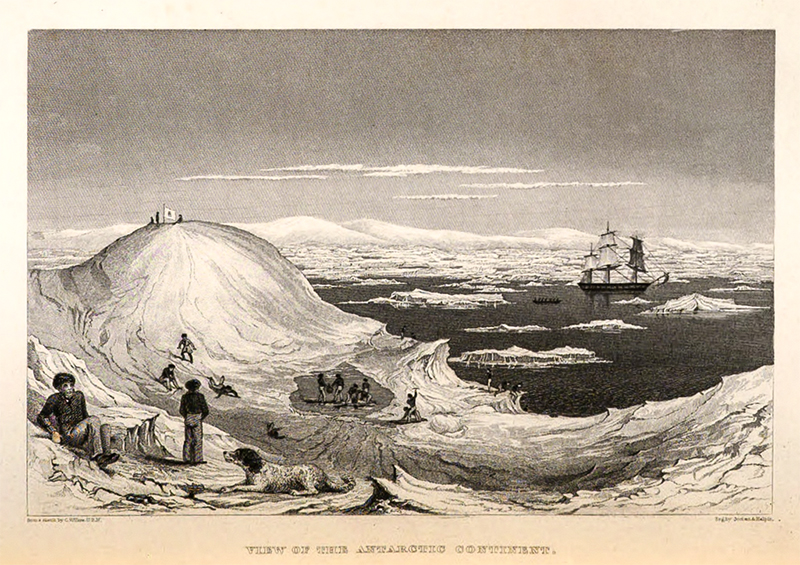[ Erskine / Twenty Years Before the Mast ]
Erskine was a career sailor (able-bodied seaman) who was part of the U. S. Exploring Expedition of 1838 - 1842, which was headed by Rear Admiral Charles Wilkes. Erskine self-published his memoir in 1890.
This expedition included a Newfoundland dog, Sydney, who is discussed in a couple of passages by Erskine (below) and, as well, in two different works written by the Expedition's leader, Charles Wilkes: his official account of the expedition, Narrative of the Exploring Expedition (1844) and The Autobiography of Rear Admiral Charles Wilkes (1871). One of the incidents discussed by Erskine (the first one below) is also treated by Wilkes in both of his books.
Wilke's Newfoundland dog, a Landseer named Sydney, is also commemorataed as a statue at the Smithsonian Institut'es National Air and Space Museum; click here to check out that statue.
Erskine's first mention of the Newf is when a Fijian chief named Tanoa is first brought aboard the expedition's flagship; Sydney is there to "greet" the chief:
As he [Tanoa] and his suite came over the gangway and stood on deck, the ship’s pet, Sydney, a beautiful, large Newfoundland dog which had been presented to the commodore by the governor of Australia, got sight of him. The chief's appearance did not make a very favorable impression on Sydney, for the dog kept in front of him, growling and looking savagely at him. When within a few feet of the dog the king took the front end of his maro and shook it at him. The dog grabbed it and tore it entirely from his body. The king was so frightened that he fell on the deck. One of the quartermasters seized the dog by the collar, and, by order of the commodore, put him in the brig.
I believe Sydney was the first dog that the king had ever seen. (147)
Sydney the Newf is next mentioned by Erskine when the expedition lands in what is now the state of Washington in the U. S. to conduct cartographic surveys. The arrival of Independence Day prompts a small celebration. The expedition members began the day by firing the cannons 26 times, once for each state in the Union:
At two bells, nine o’clock, all hands, including the officers, with the exception of Mr. Vanderford, our master's mate, who remained as ship-keeper, went on shore. At the observatory the commodore formed us into a procession. The starboard watch took the lead, then came the Vincennes' band, fife and drum, then the master-at-arms with Chief Vendovi dressed in the Fiji fashion, and leading our ship's pet, the dog Sydney, by two fathoms of marling; then the larboard watch, and finally the marines. We were all dressed in span-clean white frocks and trousers. The commodore led the procession, followed by the other officers, and we all marched off, with colors flying and music playing. In passing Fort Nisqually we gave three tremendous cheers, which were returned very faintly from the ramparts by several red-coats. (276)
Erskine's last mention of Sydney is this practical joke:
On the 16th crossed the equator. One very warm and pleasant night, in the mid-watch, seeing three of our quarter growlers (old sailors) taking a siesta on deck, and enjoying our big dog, Sydney, as a pillow, I hunted up a bone and placed it about a foot from the dog's nose. As soon as Sydney got a smell of the bone he suddenly sprang up, and the sleepers' heads came down on deck with a thump. Such a growling! Why, they were like three old bears with sore heads, and if they had known who the culprit was, I verily believe they would have thrown him overboard. (303)
 Charles Wilkes' own sketch of "the Antarctic continent" includes Sydney in the foreground.
Charles Wilkes' own sketch of "the Antarctic continent" includes Sydney in the foreground.

